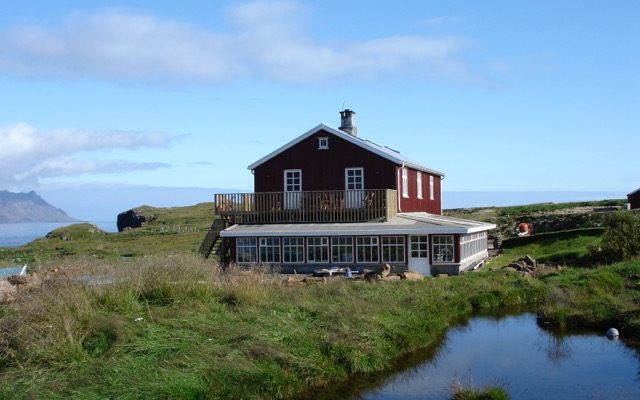Skálanes Research Station

Address
Skalanes NHC,710, Seyðisfjörður
Iceland
Station manager
Ólafur Örn PéturssonStation Features
Opening year: 2005 Status: OpenFacilities
Station name and owner
Skálanes Nature and Heritage Center is an independent research station directed and owned by Ólafur Örn Pétursson.
Location
Skálanes is located on the east coast of Iceland at the bay of the remote fjord, Seyðisfjörður. Here, skálanes sits within a 1250 hectare (3089 acre) independent nature reserve containing habitats and ecosystems representative of the East fjords region, including the common species of flora and fauna and especially known as a habitat for a wide variety of bird species.
Climate data
Grey colours are WMO Climate Normals including maximum and minimum values. Blue colours are individual years.
Climate data for the stations where extracted via Copernicus Climate Data Store, from the global gridded reanalysis product:
ERA5 monthly averaged data on single levels from 1940 to present.
Description and source code: Roemer J.K. 2023. https://doi.org/10.5281/zenodo.10214922
Data Source: Hersbach et al. 2023. Copernicus Climate Change Service (C3S) Climate Data Store (CDS), https://doi.org/10.24381/cds.f17050d7
Biodiversity and natural environment
The nature reserve surrounding Skálanes includes pastures, shoreline, fresh water rivers, inter tidal, hills, mountains, wetlands and a 640 m. coastal cliff. The area is a habitat of a rich wildlife including reindeer, the arctic fox and 47 different bird species such as a large arctic tern colony, puffins and a eider colony.</p> Plants of arctic origin are characteristic to the area and a large collection of archaeological sites is found within the nature reserve. The research center includes human activities such as eider farming, a vegetable garden and a small holding of ducks, pigs and chickens in the summer season.
History and facilities
Skálanes was established in 2005 as an experimental nature and heritage research center by the two local natural scientists, Ólafur Örn Pétursson and Rannveig Þorhallsdottir. The intention of Skálanes to be a place of learning, a place where the Icelandic environment and cultural history can be researched and interpreted. The remote and restored farmhouse at the mouth of Seyðisfjörður provides an ideal location for exploring the arctic wildlife and native plants, the mountains, waterfalls, sea cliffs, meadows and beaches. The site and center is available as a space for researchers and visitors to interact with nature, history and each other to develop ideas and be exposed to new ones. Skálanes can accommodate up to 20 people in separate and shared bedrooms, including two large living rooms with work desks, a dining hall, a professionally equipped kitchen, five bathrooms and an outdoor shower and sauna. Two laboratories (wet and a dry) are currently under construction and will be ready during Spring 2018. Skálanes is currently hosting 1-12 week student excursions mainly from American and British universities. The visiting students and researchers primarily work within the following fields: ecology, biology, geography, archaeology , computer science, zoology, and geology.
General research and databases
We are currently developing a monitoring program and a new database at Skálanes. The databases are currently not all publishable, but can act as a reference for further studies. Avian time series and baseline data on geology, plants, insects, birds is available.
Station Monitoring
Human dimension
The nearest town, Seyðisfjörður, consists of 650 inhabitants. It is historically a fishing community based around primary industries. During the past 20 year it has gone through a transformation process with more emphasis on arts and culture to counter the decline of its historic industry base. This has increased its attraction for tourists and also for individuals focusing on arts and creativity. The town has a big hospital, a primary school, an art school, a large community center, 2-5 restaurants depending on the season and a number of art residencies.
Access
Egilsstaðir Domestic Airport is located 25km from Seyðisfjörður. Visitors at Skálanes will have to take the local bus or drive with the Skálanes staff to and from the airport driving over a mountain pass at 650m stretching along a 10km plateau. During the winter season the road to Seyðisfjörður can become momentarily impassable due to snow and storm intensity. All travel to and from town should be planned according to the weather forecast. From Seyðisfjörður you follow a 17km dirt road out of the fjord towards the open sea. The drive can only be done in a large 4×4 wheel drive as the road out to Skálanes contains three large river crossings. Travel from town to Skálanes takes approximately 25 minutes in clear, snow free conditions. For winter stays and work, one should plan for extended stays lasting 3-7 days in a row between vehicles coming out to Skálanes.

